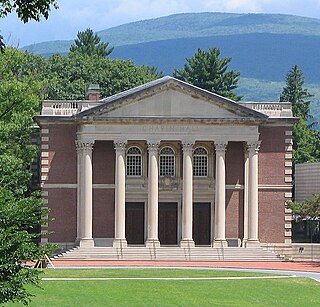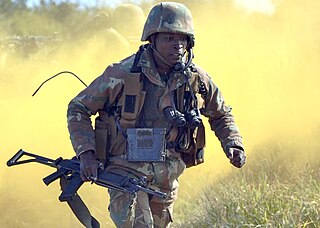Allen Newell was a researcher in computer science and cognitive psychology at the RAND Corporation and at Carnegie Mellon University’s School of Computer Science, Tepper School of Business, and Department of Psychology. He contributed to the Information Processing Language (1956) and two of the earliest AI programs, the Logic Theory Machine (1956) and the General Problem Solver (1957). He was awarded the ACM's A.M. Turing Award along with Herbert A. Simon in 1975 for their basic contributions to artificial intelligence and the psychology of human cognition.

John Howard Casper is an American astronaut and United States Air Force pilot.

The Second Air Force is a USAF numbered air force responsible for conducting basic military and technical training for Air Force enlisted members and non-flying officers. In World War II the CONUS unit defended the Northwestern United States and Upper Great Plains regions and during the Cold War, was Strategic Air Command unit with strategic bombers and missiles. Elements of Second Air Force engaged in combat operations during the Korean War; Vietnam War, as well as Operation Desert Storm.
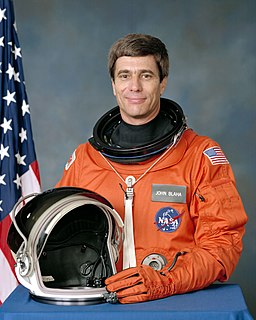
John Elmer Blaha is a retired United States Air Force colonel and a former NASA astronaut. He is a veteran of five space missions aboard the Space Shuttle and Mir.

Donald Ray McMonagle is a former astronaut and a veteran of three shuttle flights. He became the Manager, Launch Integration, at the Kennedy Space Center, Florida, on August 15, 1997. In this capacity he was responsible for final shuttle preparation, launch execution, and return of the orbiter to KSC following landings at any other location. He was chair of the Mission Management Team, and was the final authority for launch decision.
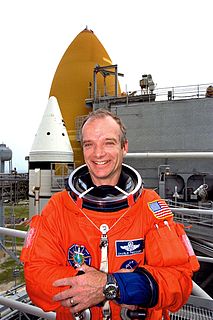
Charles Joseph Precourt is a retired NASA astronaut. His career in flight began at an early age, and spans his entire lifetime. He served in the US Air Force, piloted numerous jet aircraft, and piloted and commanded the Space Shuttle. Notably, he piloted or commanded several missions which involved docking with the Russian Mir space station and was heavily involved in Russian/US Space relations as well as the International Space Station collaboration. He retired from the USAF with the rank of colonel.

Sherwood Clark "Woody" Spring is a retired United States Army colonel and former NASA astronaut. Spring is married with two children. He is the father of United States Olympian Justin Spring. Sherwood Spring has logged 165 hours in space, 12 of which were spent conducting spacewalks. Spring has also accumulated 3,500 hours in 25 different military and civilian aircraft; over 1,500 of those hours were spent in jet aircraft.
The Air Force Specialty Code (AFSC) is an alphanumeric code used by the United States Air Force to identify a specific job. Officer AFSCs consist of four characters and enlisted AFSCs consist of five characters. A letter prefix or suffix may be used with an AFSC when more specific identification of position requirements and individual qualifications is necessary. The AFSC is similar to the Military Occupational Specialty Codes used by the United States Army and the United States Marine Corps or enlisted ratings and USN officer designators used by the United States Navy and enlisted ratings and USCG officer specialties used by the United States Coast Guard.

The United States Air Force Security Forces are the ground defense force and military police service of the U.S. Air Force. The Security Forces (SF) were formerly known as Military Police (MP), Air Police (AP), and Security Police (SP) at various points in its history. Due to its significant ground combat mission, the Security Forces are sometimes regarded as integral infantry within the Air Force.

Tuskegee Airmen National Historic Site, at Moton Field in Tuskegee, Alabama, commemorates the contributions of African-American airmen in World War II. Moton Field was the site of primary flight training for the pioneering pilots known as the Tuskegee Airmen, and is now operated by the National Park Service to interpret their history and achievements. It was constructed in 1941 as a new training base. The field was named after former Tuskegee Institute principal Robert Russa Moton, who died the previous year.

Air University is a professional military education university system of the United States Air Force. It is accredited by the Commission on Colleges of the Southern Association of Colleges and Schools to award Master's Degrees.
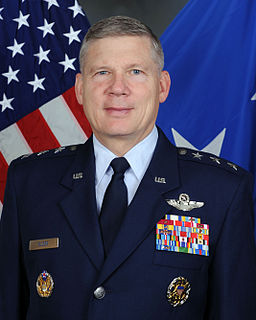
Lieutenant General Robert J. "Bob" Elder Jr. is the former Commander, 8th Air Force; Commander, Barksdale Air Force Base, Louisiana; and Commander, Joint Functional Component Command for Space and Global Strike, U.S. Strategic Command, Offutt AFB, Nebraska. He is now a member of the research faculty at George Mason University. As one of three active-duty numbered air forces in Air Combat Command, 8th Air Force provides long-range global strike, battle management, surveillance and reconnaissance, intelligence, information operations, tactical air control, and expeditionary heavy construction capabilities to combatant commanders. The "Mighty Eighth" also conducted computer network operations as the Air Force component to the Joint Task Force for Global Network Operations before that duty was transferred to 24th Air Force, and trains Air and Space Operations Center personnel for worldwide deployment and participation in the multinational Joint Expeditionary Force Experiment.

TacSat-2 was an experimental satellite built by the USAF's Air Force Research Laboratory with an operational life expected to be not more than one year as part of the 'Advanced Concept Technology Demonstration' program.

The 177th Fighter Wing is a unit of the New Jersey Air National Guard, stationed at Atlantic City Air National Guard Base, New Jersey. If activated to federal service, the Wing is gained by the United States Air Force Air Combat Command.
The Delaware Air National Guard is the air force militia of the State of Delaware, United States of America. It is, along with the Delaware Army National Guard, an element of the Delaware National Guard.

Stephen Randolph Lorenz, is a retired United States Air Force four-star general who currently serves as president and chief executive officer of the United States Air Force Academy Endowment. His last military assignment was as the 29th Commander, Air Education and Training Command (AETC), Randolph Air Force Base, Texas. As commander, he was responsible for the recruiting, training and education of all US Airmen. His command included the Air Force Recruiting Service, two numbered air forces and Air University. Air Education and Training Command consists of 13 bases, more than 92,000 active duty, reserve, guard, civilians and contractors, and 1,750 trainer, fighter and mobility aircraft.
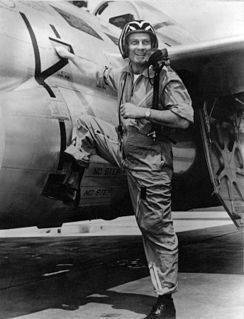
Clinton Dermott "Casey" Vincent was an American flying ace who became the second youngest general officer in United States Army Air Forces history. Vincent was one of Claire Chennault's two top fighter commanders in the China Burma India Theater of World War II. He served as the model for two comic strip characters by Milton Caniff: "Colonel Vince Casey", and "Brigadier General P.G. 'Shanty' Town".

Joint Base Elmendorf–Richardson is a United States military facility in Anchorage, the largest city in Alaska. It is an amalgamation of the United States Air Force's Elmendorf Air Force Base and the United States Army's Fort Richardson, which were merged in 2010.

Air force ground forces and special forces are infantry and special forces units that are part of a nation's air force. Airmen assigned to such units are trained, armed and equipped for ground combat and special operations.

